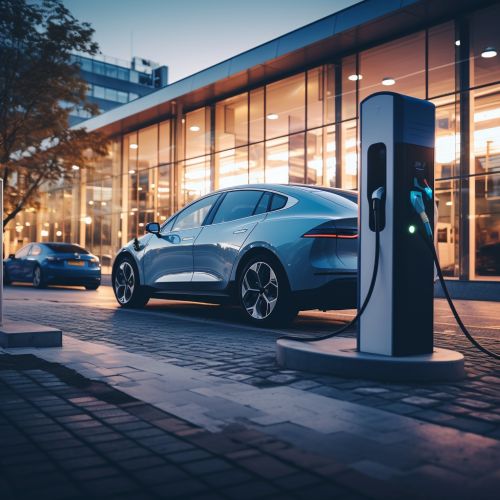Plug-in Electric Vehicle
Overview
A plug-in electric vehicle (PEV) is a motor vehicle that can be recharged from an external source of electricity, such as wall sockets, and the energy stored in the rechargeable battery packs drives or contributes to drive the wheels. PEV is a subcategory of electric vehicles that includes all-electric or battery electric vehicles (BEVs), plug-in hybrid vehicles (PHEVs), and electric vehicle conversions of hybrid electric vehicles and conventional internal combustion engine vehicles.
History
The concept of plug-in electric vehicles is not a new one. In fact, the earliest known electric vehicle was built by Thomas Davenport, a blacksmith from Vermont, USA, in 1834. However, it was not until the 20th century that the idea of a plug-in electric vehicle became a viable option for mass transportation.
Technology
Plug-in electric vehicles use electric motors and motor controllers instead of internal combustion engines (ICEs) for propulsion. They derive all or part of their power from electricity supplied by the electric grid. They are charged from the grid, storing the electricity in rechargeable batteries.


Battery Technology
The battery technology in plug-in electric vehicles has evolved over the years. The most common type of battery used in current PEVs is the lithium-ion battery due to its high energy density and long lifespan. Other types of batteries, such as lead-acid and nickel-metal hydride, are also used but are less common.
Charging Infrastructure
The charging infrastructure for plug-in electric vehicles includes the equipment used to charge the vehicles and the regulatory framework that governs the charging process. This includes charging stations, charging equipment, and the software systems used to manage charging.
Environmental Impact
The environmental impact of plug-in electric vehicles is generally less than that of conventional internal combustion engine vehicles. This is due to the fact that electric vehicles do not emit tailpipe pollutants, giving them a significant advantage in terms of air quality.
Greenhouse Gas Emissions
While plug-in electric vehicles do not emit tailpipe pollutants, they do produce greenhouse gas emissions during the manufacturing process and, depending on the source of electricity used to charge them, during the charging process.
Energy Efficiency
Plug-in electric vehicles are generally more energy efficient than conventional internal combustion engine vehicles. This is because electric motors convert a higher percentage of the electrical energy from the grid to power at the wheels.
Market Trends
The market for plug-in electric vehicles has been growing steadily over the past decade. This growth is driven by a number of factors, including improvements in battery technology, increased environmental awareness, and government incentives.
